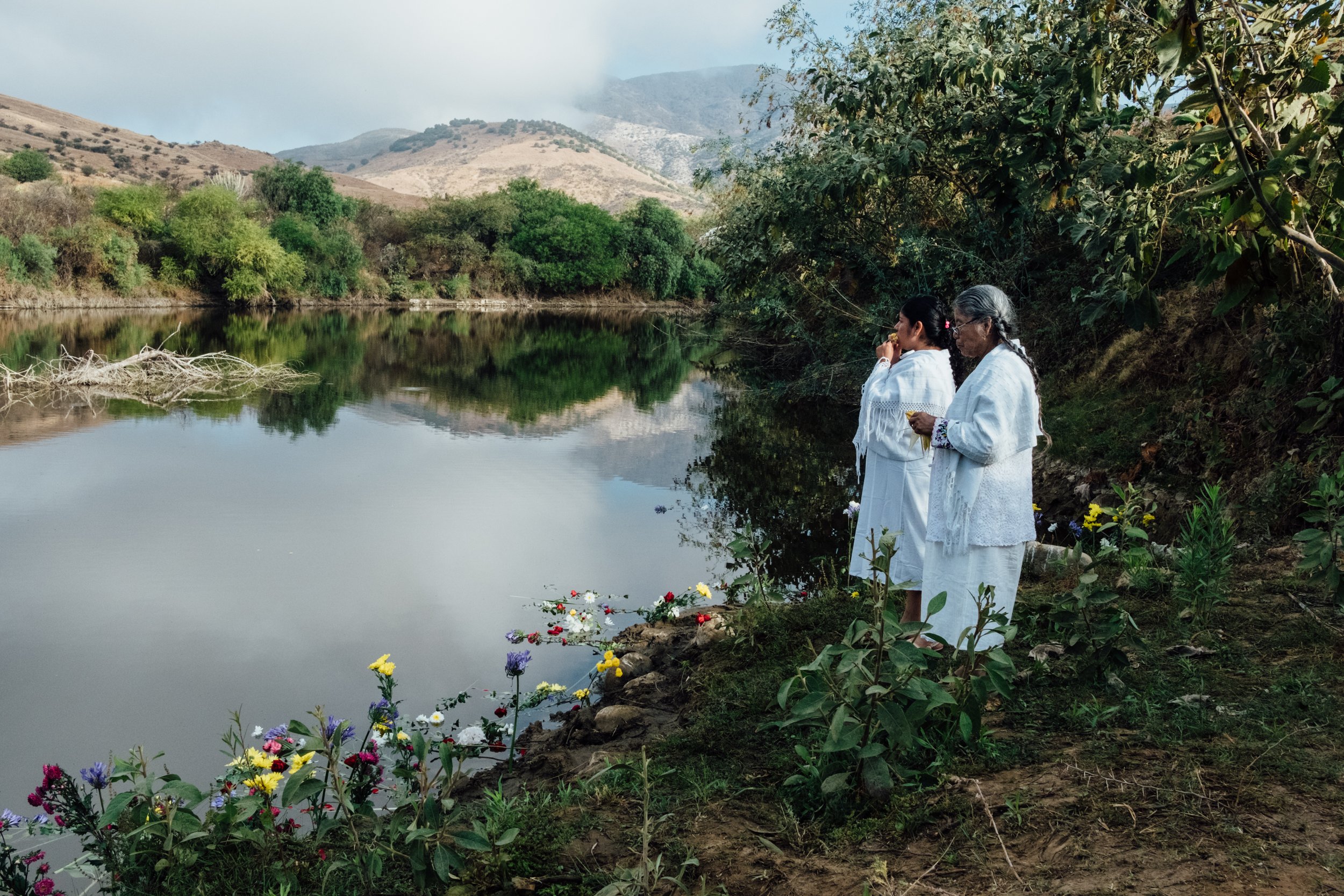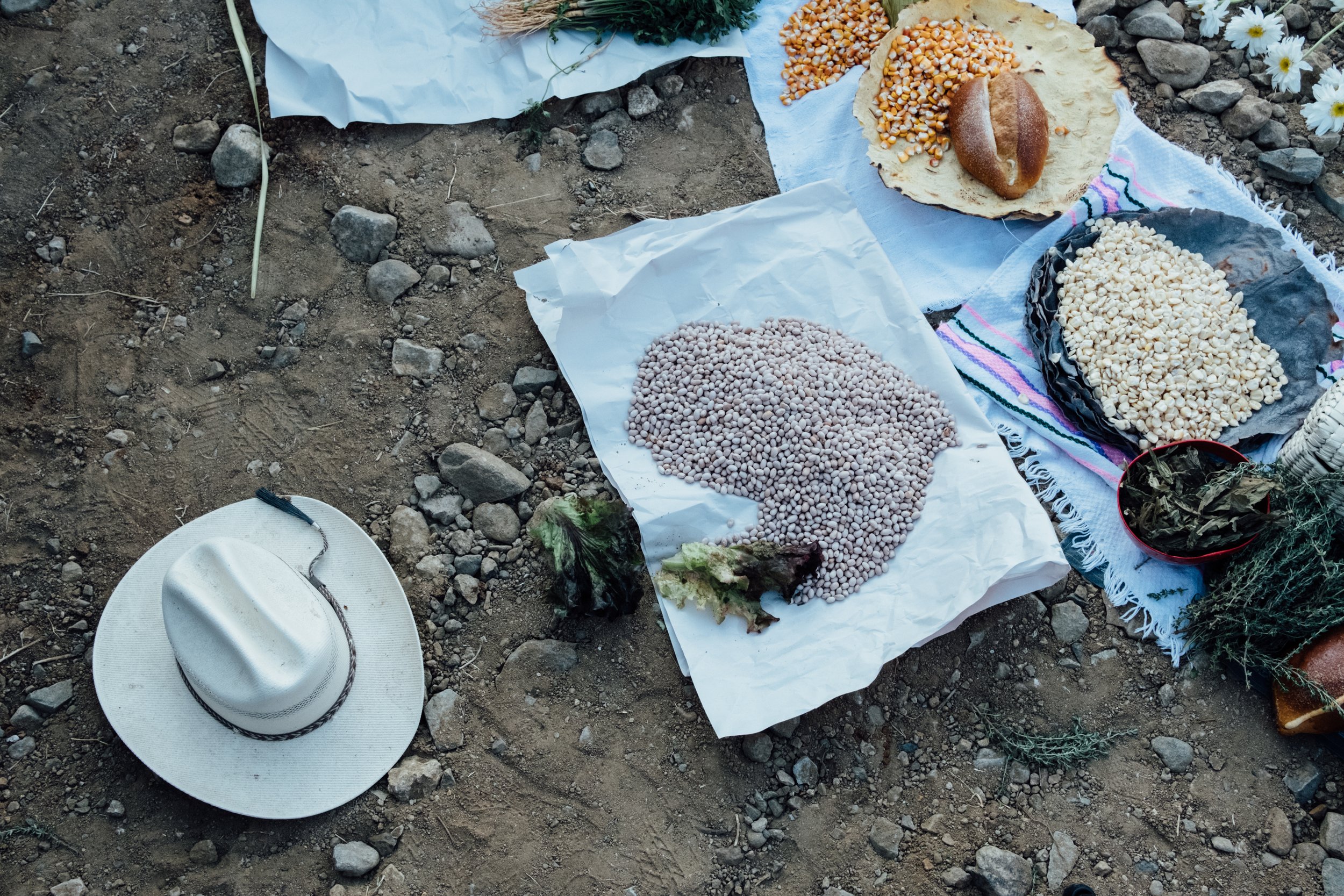Indigenous Rituals In Mexico: Connecting With The Land And Community
SANTIAGO ATITLAN, Mexico — On a sunny day, Lucio Jimenez Ocampo accompanies us to his coffee plantations. Coffee here is hidden under the shade of trees that support its growth. Similar to many other farmers from the Sierra Mixe region in the southern Mexican state of Oaxaca, in 2015, he lost nearly all his coffee plants to coffee rust — a plague that thrives in hot and humid weather.
Today, his coffee plants are tall, healthy and abundant enough to support his entire family. Apart from the hard work Jimenez Ocampo does on the plantations, his family also performs rituals to help coffee grow.
“My parents do the rituals, and this way they secure good harvest,” said 40-year-old coffee producer. “We kill a turkey, bring tepache and mezcal to the plantation and eat there with the workers. We also perform the ritual after the harvest to give thanks and ask for permission to carry out all the following activities in the field without any danger.”
READ: Many Say it’s important Their National Leader Stand Up For People’s Religious Beliefs
Lucio’s family is part of the Mixe Indigenous group. His parents speak very little Spanish; here, the Mixe language continues to thrive. The Mixe people consider themselves never conquered, and turkey — an animal native to the Americas before colonization — is served at all significant events.
However, Jimenez Ocampo said there are only a few families who do these rituals in his village. To him, the importance of these spiritual practices is clear: “These rituals are very important because this is the inheritance that the ancestors left for us.”
Asking Mother Earth for permission and for the well-being of the plants does not only accompany coffee producers of the Mixe group, but also other farmers in Oaxaca.





Photos by Noel Rojo
“The indigenous worldview has a clear link with natural resources,” writes Mexican sociologist Eduardo López Ramiréz in the publication Agua en la Cosmovisión de los Pueblos Indígenas en México (Water in the Cosmovision of Indigenous Peoples in Mexico). “In its different manifestations, the environment is a fundamental factor where symbolic aspects are materialized and they are characterized by the link between nature and culture, natural order and social order.”
Asking for water
Even though the connection with land is strong among Indigenous peoples, in some places in Oaxaca, these rituals have disappeared due to colonization, discrimination against Indigenous peoples, imposition of other religions or a combination of these factors. In other places, they have resisted and in others, they have even become stronger with time.
In Santa María Huazolotitlán, the Mixtec Indigenous people alongside Afro-Mexicans perform a ritual of asking for the rain every year in May. The Mixtec people call themselves Ñuu Savi, or People of the Rain.
“It is an important ritual in the ritual calendar of Mesoamerican origin. For Huazolotitlán, it is essential to continue with the tradition to walk up the scared hill Cerro Grande with the Virgin of Asunción and then continue with rain petitions in different significant sites of the community throughout the month,” said Céline Demol, an anthropologist with years of experience working in the region of Costa Chica in Oaxaca.
The first pilgrimage starts at the local church, where pilgrims gather the Virgin of Asunción, who accompanies them throughout.
“Before we set off, we listen to the words of Tata Mayor or Tata Cabecilla,” said Demol, who has participated in the ritual twice. “These rain petition rituals are organized by the traditional authorities of the Mixtec communities. In Huazolotitlán, this traditional authority, composed of men who have served various roles within the system of ‘uses and customs,’ is called the Tata Mandones council.” During the pilgrimage, different council members take responsibility for various parts of the ritual.
Pilgrims walk for about eight hours through the communities on the way to the sacred hill, taking turns carrying the virgin. In each community — Indigenous or Afro-Mexican — the people welcome the Virgin of Asunción. Pilgrims stop at local churches to eat before continuing.
This year, approximately 25 people slept in the community below Cerro Grande. Around 3 a.m., they resumed their trek to avoid the day's intense heat. May’s hot weather is common, but this year Oaxaca experienced severe droughts and extremely high temperatures. With the water shortages that plagued the state, the rain petition was especially urgent.
Syncretism
Upon reaching the hilltop, pilgrims are greeted by the sound of drums and flutes as musicians began to play. Meanwhile, Tatas Mandones worships the crosses on the rocks, preparing for the placement of the virgin.
A priest from José María Morelos, an Afro-Mexican community, begins by praying rosaries. Afterwards, Tata Cabecilla speaks his ritual words in Mixtec tu'un savi.
“From what other Tatas have told me, these words request water not only for the community or the region but for the entire world — the universe, humans, Earth and animals,” Demol said. “Tata Cabecilla also asks for sufficient rain, not too much, and for protection against hurricanes and storms.”
After spending some time atop the hill, the pilgrims return to the nearest village.
“To ask for rain, it is essential to complete the entire pilgrimage with the virgin, pray the rosary at various points along the route and have the traditional authority pronounce the ritual words,” Demol said.
He added: “These rain petition rituals were dedicated to specific deities in pre-Hispanic times, and with colonization, they gave rise to a syncretism between Mesoamerican deities and Catholic saints and virgins. It is important to make the link between the past and the present, marked by centuries of Indigenous resistance through their ritual practices.”
The syncretism she describes is common in the spiritual practices of Oaxaca’s Indigenous peoples.
“The Indigenous communities do not separate one thing from another,” said Beatriz Salinas, a director of the civil society organization Flor Y Canto, which started practicing the rituals within a bigger community, in this case of Zapotec origin. “In the Indigenous world, there is a very deep experience that recognizes the great creative spirit; there is a god of life, there is a god who expresses himself through water, who communicates through rain. There is no divorce between the expression of a Catholic faith and an Indigenous spirituality. Catholic spirituality has its depth, its greatness, its beauty, and Indigenous spirituality also has it. They are talking to us about understanding life in a deeper way.”
Making it public
The organization Flor Y Canto, alongside 16 Indigenous Zapotec communities, led a 17-year-long battle for the rights to administer their water sources. This legal fight was accompanied with rituals.
“We were opening the space to express Indigenous spirituality. The rituals are important for understanding the life of Indigenous peoples,” Salinas said.
She is a successor of Carmen Santiago Alonso, an environmental activist who was a promoter of both Indigenous spirituality and the Catholic belief. She was a lay missionary who got inspired to rediscover Indigenous spirituality by Archbishop Bartolomé Carasco Briseno, a proponent of liberation theology, a movement within the Roman Catholic Church in Latin America that reclaimed religion towards the pursuit of social justice.
Santiago Alonso died in February 2022. However, she managed to see how in November 2021, the Mexican President Andrés Manuel López Obrador signed the decrees that granted control over their water sources to these communities, a precedent case in Mexico. It was a result of tens of general assemblies — meetings where communities’ representatives discuss further steps in the process, including with government representatives.
Before each of these assemblies, the communities were performing rituals. Zapotec communities also have places in their territories that they consider sacred. They carefully prepare them for the rituals. They purify the area and the participants; they find a place for the offerings and create an atmosphere of respect, accompanied by the sound of sea shells.
In the beginning, not everybody wanted to participate at rituals for several reasons.
“Years ago, these expressions of Indigenous culture were banned due to colonization,” Salinas said. “They were repressed and demonized. Many people were murdered for maintaining these forms of expression. At school we were taught that these rituals are from the past. And so, currently, not everybody expresses themselves freely. So doing these rituals publicly has not been easy.”
However, she emphasizes the importance of reestablishing these expressions of Indigenous experience. These rituals, she said, are crucial in combating climate change because "they make people feel at one with nature, thus discouraging environmental destruction.”
Moreover, these spiritual practices are essential to the identity and unity of Indigenous peoples.
“Gathering like this strengthens the spirit,” Salinas said. “It strengthens human relationships as it creates an atmosphere of brotherhood and desire for mutual support. There is a desire to share, there is a desire for solidarity. We understand that there are other men and women who are trying their best to contribute to the solution of a problem.
“It is not possible to maintain such a process for so many years without an internal force,” she added, referring to how spirituality was important for the legal fight that the 16 Zapotec communities ended up winning.
Magdalena Rojo is a freelance journalist focusing on social and global issue. Her work has appeared in The New Humanitarian, Unbias the News, Deutsche Welle as well as U.S. publications such as Religion News Service or Yes! Magazine. Rojo was a journalism fellow for the Spiritual Exemplars Project at the University of Southern California and a journalism fellow at the Chaplaincy Innovation Lab, where she explored how the U.S. population benefits from spiritual care provided by chaplains.
Noel Rojo is a photographer and journalist fellow with the University of Southern California’s Center for Religion and Civic Culture. He has been published in various international media outlets, such as News Deeply, Deutsche Welle, Friends of Friends, and national media in Slovakia, the Czech Republic and the U.S.
